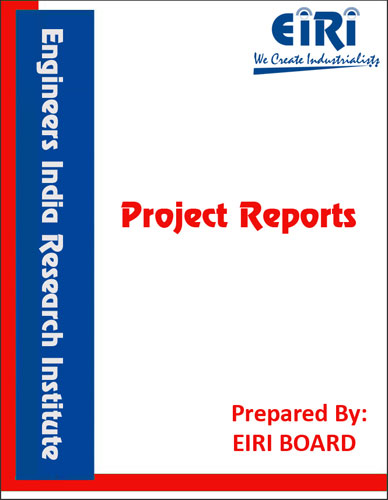SYNTHETIC RUBBER ADHESIVE WITH PROCESS & FORMULA
The project report includes Present Market Position and Expected Future Demand, Market Size, Statistics, Trends, SWOT Analysis and Forecasts. Report provides a comprehensive analysis from industry covering detailed reporting and evaluates the position of the industry by providing insights to the SWOT analysis of the industry.
We can prepare PROJECT REPORT as per your INVESTMENT PLAN for BANK LOAN REQUIREMENT and INDUSTRY ANALYSIS. All reports are prepared by highly qualified consultants and verified by a panel of experts.
Have Query? Click Here to Chat
Industry Expert is Online, Chat with him for more detail.

The basic definition of an adhesive as used by the Adhesive Sealant Council in America is a material used for bonding that exhibits flow at the time of application.
There is no simple theory of adhesion, and the truth for any one system is probably a combination of adsorption, electrostatic attraction and diffusion.
There are many methods of classifying adhesives. Some use a system of end use, e.g. adhesives for metals, adhesives for textiles etc. However a system based on the chemical properties and performance is more appropriate.
From a practical viewpoint the most important aspect of adhesion technology is preparation of the surfaces of the materials to be bonded together.
Rubber Solution is defined as a substance capable of holding Rubber materials together by surface attachment.
Substances may attach to surfaces and develop the internal or cohesive strength necessary to hold materials together while cooling from the liquid to the solid state, while losing solvent or during chemical section substances called pressure-sensitive adhesive generally do not undergo phase change in order to hold materials together.
Many types of Adhesives are currently in use and there is no adequate single system of classification for all products. The adhesives industry has generally employed classification based on end use, such as metal to metal adhesives, wood adhesives, general purpose adhesives, paper and packaging adhesives and so on.
Apart from end-use, adhesives may be classified according to physical form, chemical composition, method of application, various processing factors (e.g. setting section) and suitability for particular service requirements or environments.
Origin – Adhesives may be broadly classified as being either natural (occurring naturally and requiring little change) or synthetic.
Phenol formaldehyde was the first synthetic resin of importance, and was mainly used for wood work and plywood manufacture. This was followed by Urea formaldehyde and resorcinol-formaldehyde etc. Later, demand of the aircraft industry for materials suitable for metal bonding led to the development of modified phenolic sesions containing synthetic rubber components which displayed high shear and peel strengths.
INTRODUCTION
PROPERTIES OF ADHESIVE
USES AND APPLICATION
THEORY OF ADHESION
B.I.S. SPECIFICATION
RAW MATERIALS
MARKET SURVEY
PRODUCTION OF RUBBER ADHESIVE
OVERVIEW OF ADHESIVE INDUSTRY IN INDIA
TYPES OF RUBBER SOLUTION
DETERMINATION OF ADHESION STRENGTH
DETERMINATION OF ADHESION STRENGTH AFTER HEAT AGEING
DETERMINATION OF ADHESION STRENGTH AFTER IMMERSION IN WATER
SAMPLING OF RUBBER-BASED ADHESIVES
COMPOSITION OF SOLVENT BORNE ADHESIVE
POLYCHLOROPRENE OR CHLOROPRENE RUBBER BASED ADHESIVE
CHEMISTRY AND MANUFACTURE
OF POLYCHLOROPRENE
FORMULATION OF SYNTHETIC RUBBER BASED ADHESIVE
FORMULATIONS OF RUBBER SOLUTION
FORMULATION AND PROCESS OF POLYCHLOROPRENE/NEOPRENE
BASED ADHESIVE
FORMULATION OF ADHESIVE BASED ON NEOPRENE RUBBER
FORMULATION OF POLYCHLOROPRENE RUBBER ADHESIVE
FORMULATION OF SYNTHETIC RUBBER ADHESIVE
FORMULATION OF SBR SUBSTRATE COMPOUNDING
FORMULATION OF NITRITE RUBBER COMPOUNDING
MANUFACTURING PROCESS
PROCESS FLOW SHEET FOR MANUFACTURING OF RUBBER ADHESIVE
METHOD OF SURFACE PREPARATION
SUPPLIERS OF RAW MATERIALS
SUPPLIERS OF PLANT & MACHINERY
APPENDIX – A:
1. COST OF PLANT ECONOMICS
2. LAND & BUILDING
3. PLANT AND MACHINERY
4. FIXED CAPITAL INVESTMENT
5. RAW MATERIAL
6. SALARY AND WAGES
7. UTILITIES AND OVERHEADS
8. TOTAL WORKING CAPITAL
9. COST OF PRODUCTION
10. PROFITABILITY ANALYSIS
11. BREAK EVEN POINT
12. RESOURCES OF FINANCE
13. INTEREST CHART
14. DEPRECIATION CHART
15. CASH FLOW STATEMENT
16. PROJECTED BALANCE SHEET



